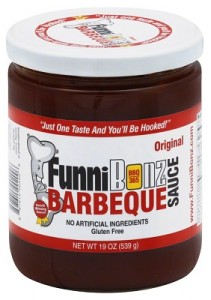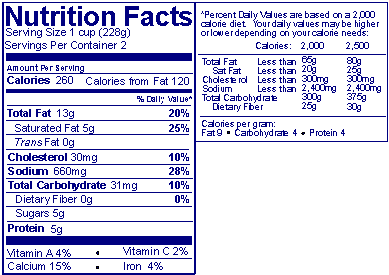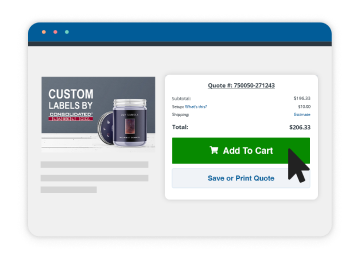
Nutrition Facts Labeling
Most consumers nowadays know what nutrition labels look like but it wasn’t that long ago when the Nutrition Facts table wasn’t required to appear on packaged food. There’s a lot of information available on what packaged food companies need to do to comply with the Food and Drug Administration’s (FDA) regulations – but understanding it is a different matter. Consolidated Label has over 30 years of experience printing nutrition labels for food products, and we’ve built our processes to meet the FDA and other standards for quality.
With this in mind, and seeing how many companies need help in this area, we created a Nutrition Facts Label Guide which you can find in our guides.
History Behind the Nutrition Facts
However, the Nutrition Facts table that we’re familiar with today hasn’t actually been around for that long. In 1990, Congress passed the Nutrition and Labeling Education Act (NLEA), and packaged food companies had to comply with the new laws on May 8, 1994 and thereafter. The U.S. government has had food safety standards since the 1800s but nutrition and food-handling accountability became much more regulated in the 20th century.
About the FDA
The FDA is an agency within the U.S. Department of Health and Human Services. According to the FDA’s website, the agency is responsible for:
- Protecting the public health by assuring that foods are safe, wholesome, sanitary and properly labeled; human and veterinary drugs, and vaccines and other biological products and medical devices intended for human use are safe and effective
- Protecting the public from electronic product radiation
- Assuring cosmetics and dietary supplements are safe and properly labeled
- Regulating tobacco products
- Advancing public health by helping to speed product innovations
- Helping the public get the accurate science-based information they need to use medicines, devices, and foods to improve their health
Despite what most consumers believe, the FDA doesn’t test the nutrition—the chemical breakdown—of every finished food product on the shelf. Submitting your nutritional statements is completely voluntary. However, the FDA requires that the label shows accurate nutritional facts, and the nutrition facts are in the FDA regulated panel format.

Guidelines for compliance also can be very complex because of the sheer amount of information available and new or changing FDA regulations. However, please refer to the FDA website for the most accurate and up-to-date information.
Nutrition Labels and Responsibility
The food company has sole responsibility for ensuring that the Nutrition Facts and food claims displayed are valid and comply with FDA regulations. Although it’s unlikely the FDA will take regulatory action for minor errors, it’s in the food company’s best interest to have labels with accurate nutritional statements. The FDA recommends laboratory analysis of each nutrient and recommends only one testing agency: the Association of Official Analytical Chemists International, a non-profit scientific association.
When making your nutrition label, it should include:
- All food ingredients
- Minerals
- Caloric value
- Typical serving size
The FDA requires nutrition labeling to see what ingredients and allergens are in your food product. When Congress passed the Food Allergen Labeling and Consumer Protection Act of 2004, a food product that had any of the “Top 8 Allergens” must be listed on the nutrition label. The top 8 allergens according to the FDA are as follows:
- Milk
- Eggs
- Fish
- Crustacean shellfish
- Tree nuts
- Peanuts
- Wheat
- Soybeans
However, your food’s nutrition label must appear on your product’s Principal Display Panel (PDP) which is the area most likely to be seen by the consumer. Depending on how much space your food product has available for the label will determine how the Nutrition Facts table looks. Below are also two options if space is an issue:

If your nutrition label can’t list additional minerals and vitamins underneath iron, you’re allowed to list the additional nutritional statements to the right with a line that sets them apart from the footnotes.

If the package has insufficient continuous vertical space (i.e., about 3 inches), another acceptable format is the “tabular” horizontal format.
Additional Resources for Nutrition Labels
To read more about FDA regulations on nutritional labels, visit our Nutrition Facts Label Guide.
Still have a problem fitting the table onto the food product? The FDA allows certain exemptions but you must contact them in writing to request an exemption. Please direct your request to:
Office of Nutrition, Labeling, and Dietary Supplements
HFS-800, 5100 Paint Branch Pkwy.
College Park, MD 20740
Your exemption request letter should:
- Specify that you are requesting an exemption or special provision under 21 CFR 101.9(g)(9).
- Identify the particular product(s) that are the subject of the request.
- State the reason(s) why it is technologically infeasible or impracticable to adhere to the regulations for such products.
- Identify the proposed alternative procedure.
- Also if possible, include an example of the proposed label(s).
As you can see after reading this article, there’s a lot that goes into making nutrition labels. The more research you do now will help and prepare you down the road when complying with FDA regulations. However, below are some great resources you can use to determine what guidelines you need to follow, how to get nutritional statements, what exemptions your company can get, and much more. You can also speak with one of our knowledgeable customer service reps for further guidance.
RESOURCES:
FDA Labeling & Nutrition
AOAC – https://www.aoac.org/
Intertek – https://www.intertek.com/agriculture/fda-food-nutrition-label-tests/
Medallion Labs – https://www.medallionlabs.com/TestOfferings/NutritionalLabeling.aspx
USDA:
USDA Nutrient Database: https://www.nal.usda.gov/fnic/foodcomp/search/


